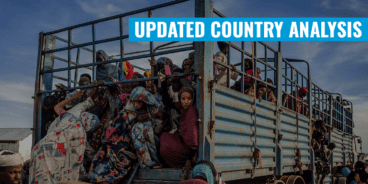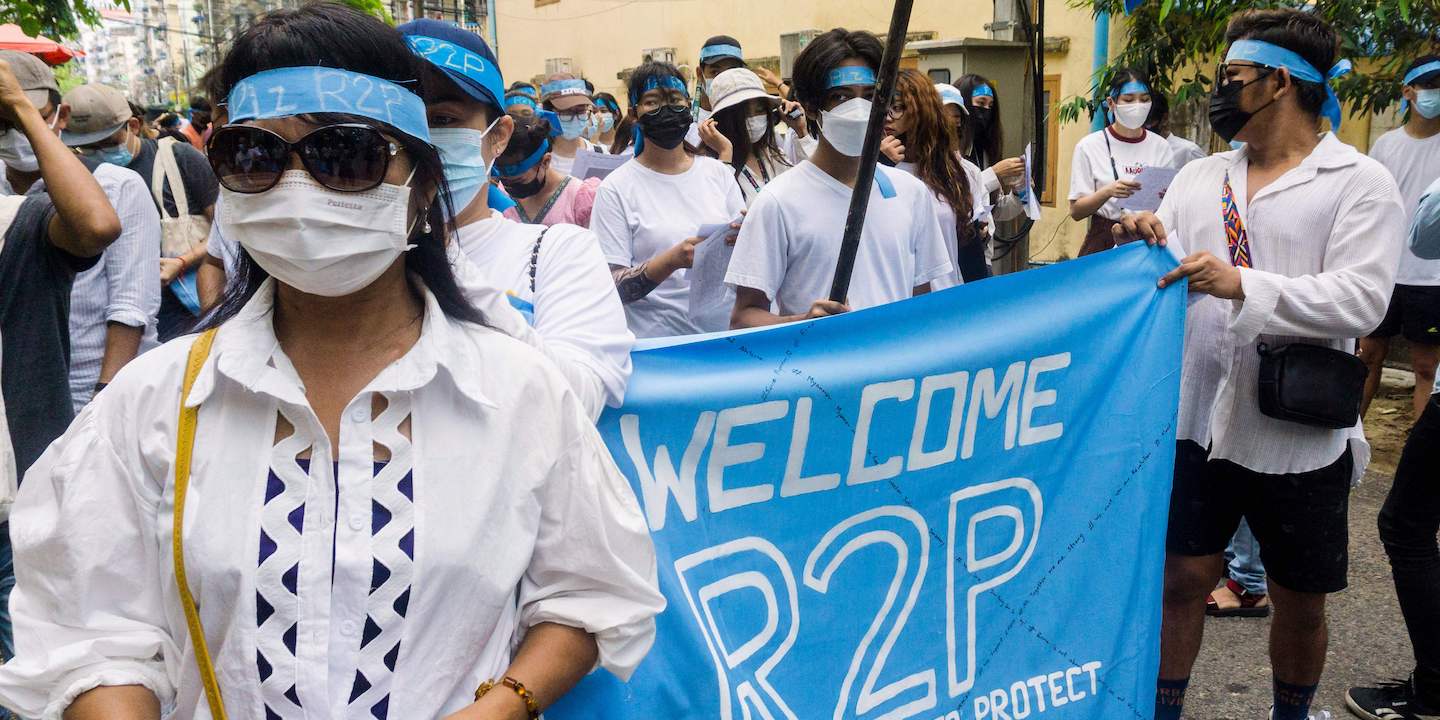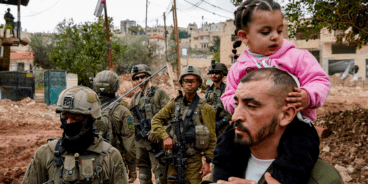

Presentation by Professor the Hon Gareth Evans AC QC* to Myanmar Institute of Australia Webinar, 26 April 2021
___________________________________________________________________________
There can be no doubt whatever that what is now happening in Myanmar, just as what happened with the military’s assault on the Rohingya in 2017, is unequivocally in violation of the Responsibility to Protect, or ‘R2P’, principles unanimously adopted by the United Nations General Assembly sitting at head of state and government level at its 60thanniversary World Summit in 2005, and endorsed thereafter on multiple occasions by the UN Security Council.
Those in Myanmar leading the resistance to the generals are acutely aware of the existence and relevance of R2P, and in particular its third pillar: that should a state ‘manifestly fail’ to meet that responsibility to its own people, it is the responsibility of the wider international community to ‘take collective action in a timely and decisive manner’, including – at the most extreme end of the reaction spectrum – through military intervention, but only if this is endorsed by the UN Security Council.
Some of the most poignant of the many distressing images coming out of the country in the last three months have been of people in cities and villages throughout the country marching with banners and placards, and building candlelit and waterborne installations, all conveying the stark and simple message – ‘We Need R2P’. They are absolutely right to invoke R2P: in killing over 700 unarmed civilians and detaining and torturing many more since the February coup began, the Tatmadaw is guilty of the most heinous crimes against humanity, and there is a profoundly real fear that even worse is to come.
But the question they starkly pose for us whether R2P is just another case of fine words and aspirations not being matched by fine deeds? The reality is that while, in the sixteen years of its existence, R2P has had conspicuous successes, it has also obviously failed to halt atrocity crimes in Sri Lanka, Sudan, Yemen – and now twice in Myanmar, so far anyway, with the military’s assault first on the Rohingya, and now on the whole civilian population.
There are plenty of available weapons in the R2P armoury, and the question as always is mobilizing the political will to use them. While it is my own instinct in Myanmar that internal dynamics – above all the almost universality of the rage that the Tatmadaw coup has generated across the country — is ultimately more likely to determine the outcome in Myanmar than any external pressure, it is critically important that external pressure be sustained and increased, for two related reasons.
First, to give support, encouragement and confidence to those inside the country that the rest of the world – or at least most of it – is behind them in their struggle. And second, to try to crack that kind of hard bubble which has so far kept the generals isolated and insulated from, and unaffected by, not only the reactions of their own people, but by those of the wider international community as well.
So what are the realistically available options for the application of R2P-driven international pressure? Let me work through them, one by one.
Military Force? As painful as this may be for some to accept, I think we have to begin by putting completely to one side the military intervention option, even if R2P does contemplate it, and even though the UN Security Council has specifically mandated it in the past, most obviously in the very similar case of one-sided violence against unarmed civilian protesters in Libya in 2011. There are three reasons why this is simply not a realistic option here:
-
- the UN Security Council, with China and Russia both wielding vetoes, will never agree to it;
- no country with any serious military capability, in the region or anywhere else, has shown any willingness to take up arms against Myanmar, with or without Security Council authorisation; and
- the prudential criteria which should govern any use of military force anywhere, not least the bottom-line requirement that any intervention to be likely to do more good than harm, weigh strongly against such intervention here– the Tatmadaw would be a formidable opponent, enabling no easy disabling strike, and absolutely guaranteeing a protracted and very bloody war in which many more people might die than be saved
But that is not the end of the story. In the R2P toolbox, there are at least four other major reaction tools available in situations like this, and all of them can and should be mobilised here. In all these areas, unlike military action, if the Security Council fails to act, as probably will remain the case, others still legally can.
Naming, Shaming and Diplomatic Isolation. Condemnatory statements (naming and shaming) and diplomatic isolation (including suspension of membership in international organisations) may not by themselves move the generals, but they do give heart to the Myanmar people.
What the Tatmadaw will find hardest to shrug off completely are the voices of its neighbours. With nothing very helpful likely to come from China or India in this respect, ASEAN’s role is more important than anyone else’s, not least because it is the one organization from which suspension really would trouble the generals. The leaders meeting at the weekend, initiated by Indonesia, Malaysia and Singapore was, as expected, not able to agree on any outright condemnation of the coup and its aftermath, let alone Myanmar’s suspension, but did at least, in a Chairman’s Statement, express ‘deep concern on the situation’.
And the leaders did reach consensus – in which Min Aung Hlaing apparently joined – on the ‘immediate cessation of violence’ (though not the release of detainees), and ‘dialogue among all parties concerned’ and an ASEAN Special Envoy to facilitate it. But none of this was reported in the regime-run media, and with Min Aung Hlaing reportedly taking the view that the violence which had to stop was that of the protestors, it very much remains to be seen to what extent the generals will in practice start yielding.
Arms Embargo. Arms embargoes are being applied by a number of countries, but it is important that these be more comprehensive and systematically applied. Like-minded countries could and should still agree to a coordinated list of prohibited items – not only arms, but also technologies for surveillance and repression – and share information on their efforts to block transfers on a voluntary basis
Targeted Sanctions. Targeted financial sanctions, directly impacting the generals’ pockets, are prima facie the ones most likely to have an impact, and it is important that, even if it hard to stop their dealings in jade and timber and energy resources in ways that bypass the global dollar economy, the US and UK have again blacklisted the two sprawling conglomerates – MEHL and MEC – through which the Tatmadaw leadership generates enormous income. There is no excuse for other countries which can have an impact of this kind not doing so: certainly it is indefensible that Australia has dragged its feet in applying even the most obvious new targeted financial and travel sanctions against the military leadership. Singapore sanctions would make the biggest impact of all, but don’t hold your breath waiting for those.
Judicial Action. An extremely useful action that could be taken by international actors against the generals is to mount a serious threat that they may end up behind bars, but like everything else that is easier said than done. Current cases in the ICJ and ICC don’t address the present situation, and while the UN Security Council could refer the Tatmadaw’s current crimes against humanity to the ICC, that remains a forlorn hope given the veto powers exercisable by China and Russia, here as with UN sanctions and embargoes,
What is potentially a much more immediate legal threat to the generals is the exercise by any state in the international community of the “universal jurisdiction” available to it under international law, in the case of crimes that can be characterised not just as local in character but so serious as to constitute “crimes against all”. In practice, this jurisdiction is exercisable when suspected individuals travel internationally and leave themselves open to arrest.
This has been exercised by over fifteen states since the Second World War, notably in relation to perpetrators of the Rwandan genocide, and it would make a huge impact if some of Myanmar’s concerned neighbours followed suit. As my colleague Simon Adams, Director of the Global Centre on the Responsibility to Protect, has noted, “It’s unlikely these guys are going to head to Disneyland for a holiday but they do want to be able to travel freely around South East Asia. They should not feel safe to do so.”
What Next? In an ideally just world, a combination of the internal dynamics now working themselves out, and a significant increase in R2P-based international pressure in any of the ways I have described, would lead to the bubble surrounding the Tatmadaw cracking and breaking so completely that its unity, and capacity to intimidate and control the country, would simply crumble and collapse, with the Myanmar people thereby succeeding in achieving the revolution they want, need and deserve.
But we all have to contemplate the possibility that this complete collapse simply may not happen. And, as painful as this will be to acknowledge, particularly for the National Unity Government, we have to contemplate the need to at least start thinking about an alternative scenario which would avoid a catastrophic escalation of the present violence into a full-scale Syrian-style bloodbath.
That alternative scenario might be one where the military does not completely capitulate, but feels itself under so much pressure that it starts looking for an exit strategy, or “off ramp”, which would save at least some of its face and some of its previous institutional role. The hope of course is that we may have seen at the ASEAN Summit the first signs of the generals’ willingness to look for such an exit, but right now the jury is still very much out on that.
Anything less than the complete removal, once and for all, of the political role of the Tatmadaw is not an ideal outcome. Anything less than the trial and punishment of those who have perpetrated atrocity crimes is not R2P working as we who have strived passionately for its birth, and the people of Myanmar who have so trustingly invoked it, would ideally want it to work. But we all have to live with the world as we find it, and do the best we possibly can to achieve peace and justice with the tools, limited though they may be, we have at our disposal. Our common humanity demands that we never give up trying to make the Responsibility to Protect a universal reality.
*Gareth Evans was Australia’s Foreign Minister from 1988-96, President of the International Crisis Group from 2000-09, and Co-Chair of the International Commission on Intervention and State Sovereignty in 2001. He chairs the International Advisory Board of the Global Centre for the Responsibility to Protect, authored The Responsibility to Protect.: Ending Mass Atrocity Crimes Once and For All (Brookings Institution Press, 2008).
Related Content


Atrocity Alert No. 428: Israel and the Occupied Palestinian Territory, Myanmar (Burma) and Ukraine
